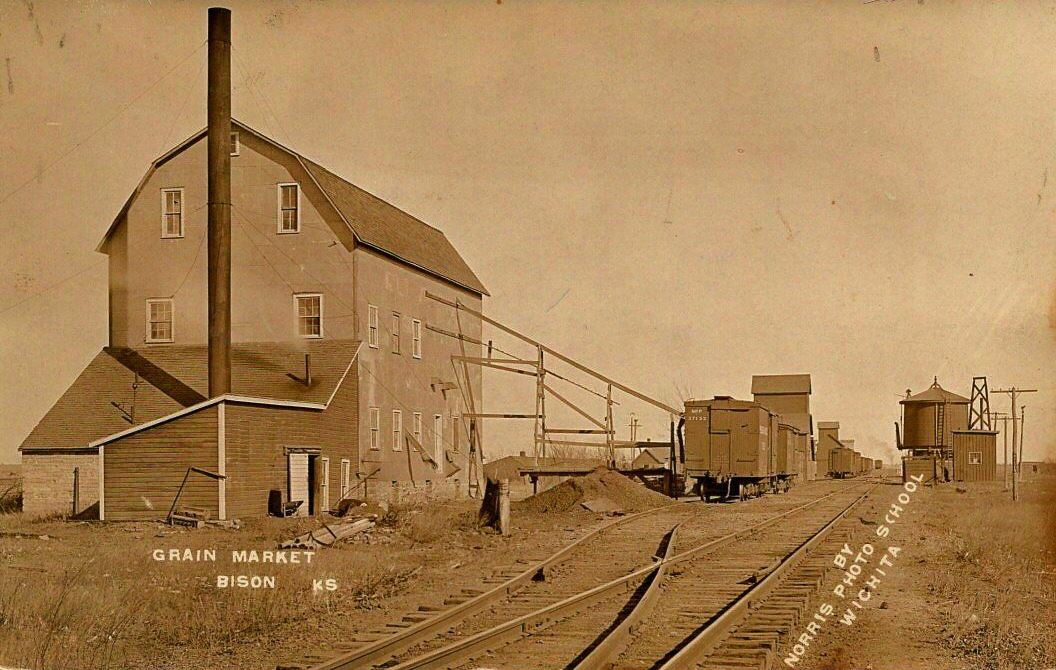

The town of Bison is named in honor of the native Bison (buffalo), who roamed the prairie land before the railroads came. The first homestead was in 1876. The location of Bison was determined by the Missouri-Pacific Railroad Townsite Company. During the spring of 1888 the town site was surveyed and platted and the town was incorporated in 1911.
The Bison Post Office and a general merchandise store opened in July 1888 and Bison continued to grow into a bustling community by the turn of the century. Bison built it's own telephone system very early in it's development.
The first school held in this vicinity was at a farm home in 1877 and the following year the Lone Star German Methodist Episcopal Church and schoolhouse was built of native stone one mile west of Bison.
The W.P.A. built a new grade schoolhouse in Bison in 1937. Joseph Tuzicka of Timken dressed the native stone blocks used for the structure. The W.P.A. built the hand dug municipal water well eighteen feet in diameter and sixty-nine feet deep, in 1935, then built the native limestone Bison City Hall over the well. Today, the well continues to produce an abundance of water.
The earliest churches in the Bison community were the English Methodist Episcopal, the German Methodist Episcopal, and the German Baptist.
In 1900, German immigrant Joseph Namur established the Bison Flour Mill (pictured above). The mill produced Excelsior flour which was shipped as far away as the eastern United States, Mexico, Cuba, and countries in Europe. The mill was destroyed by a fire started from a passing locomotive on February 14, 1924.
The first gas well drilled in Rush County was at the north edge of Bison in 1903 and reached a depth of 2,000 feet. This marked the beginning of oil and gas development in Rush County.